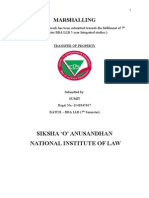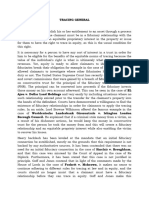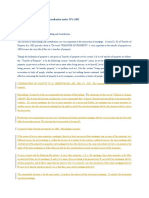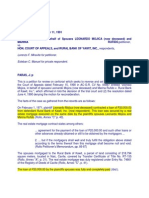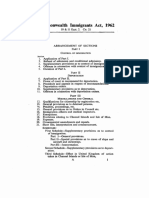0% found this document useful (0 votes)
53 views11 pagesMarshalling by AkshatSingh
The document discusses the principles of marshalling and contribution in Trusts, Property, and Administration (TPA), emphasizing their role in ensuring fair and equitable distribution of assets and liabilities among stakeholders. Marshalling prioritizes creditor claims, while contribution mandates equal sharing of liabilities among joint debtors or beneficiaries. The document also addresses the challenges in applying these principles and their significance in legal and financial contexts.
Uploaded by
pejacan561Copyright
© © All Rights Reserved
We take content rights seriously. If you suspect this is your content, claim it here.
Available Formats
Download as PDF, TXT or read online on Scribd
0% found this document useful (0 votes)
53 views11 pagesMarshalling by AkshatSingh
The document discusses the principles of marshalling and contribution in Trusts, Property, and Administration (TPA), emphasizing their role in ensuring fair and equitable distribution of assets and liabilities among stakeholders. Marshalling prioritizes creditor claims, while contribution mandates equal sharing of liabilities among joint debtors or beneficiaries. The document also addresses the challenges in applying these principles and their significance in legal and financial contexts.
Uploaded by
pejacan561Copyright
© © All Rights Reserved
We take content rights seriously. If you suspect this is your content, claim it here.
Available Formats
Download as PDF, TXT or read online on Scribd
/ 11













